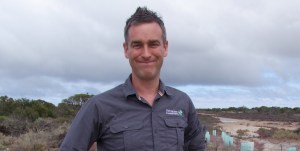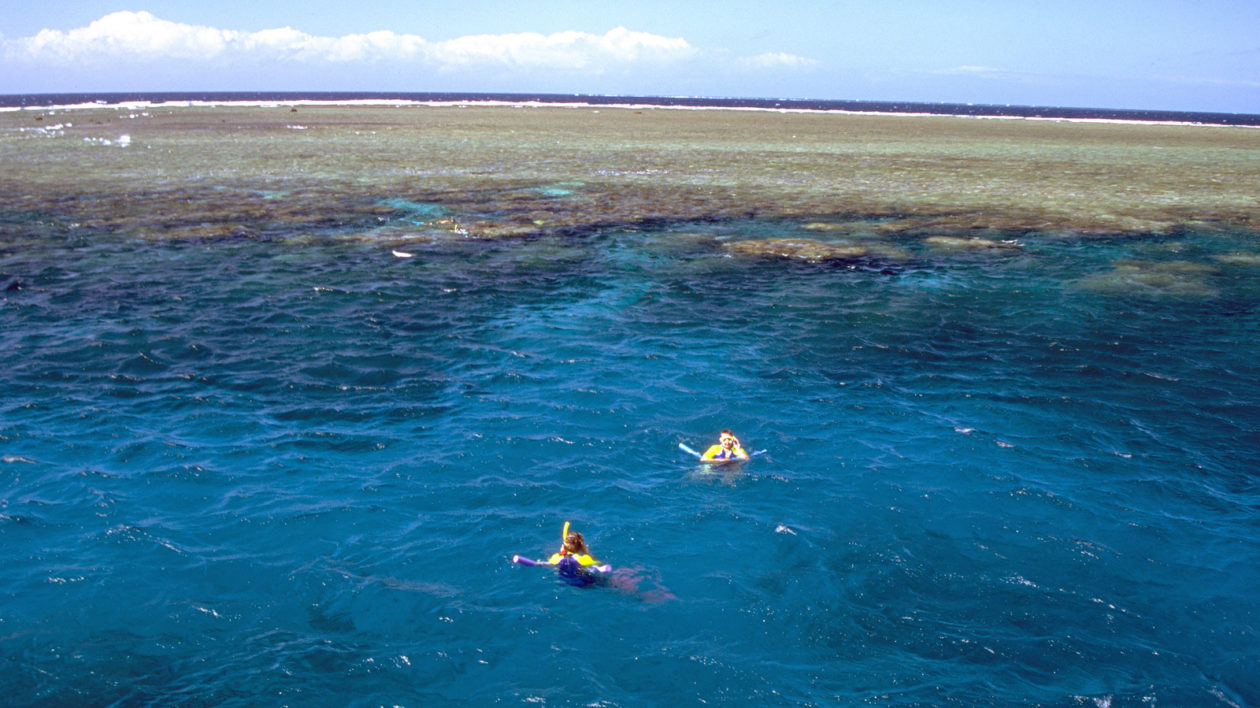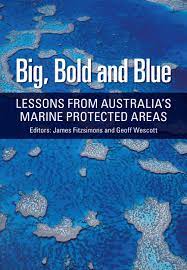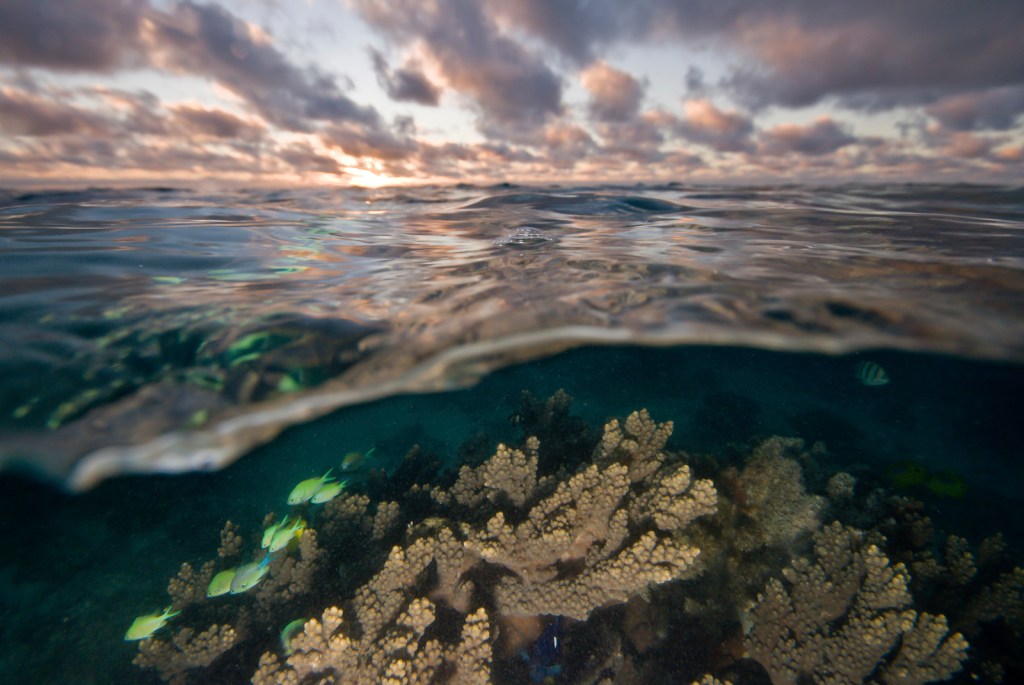Australia has one the largest systems of marine protected areas in the world, from the coral-covered Great Barrier Reef to the sub-Antarctic Macquarie Island. Now, a new book details the lessons learned by Australian scientists, policymakers, and communities during more than 130 years of marine conservation.
The book — Big, Bold & Blue: Lessons from Australia’s Marine Protected Areas — gathers lessons learned from academia, government, NGOs, indigenous communities, and the fishing sector. This resource is edited by Dr. James Fitzsimons, director of conservation for The Nature Conservancy’s Australia program, and associate professor Geoff Wescott, an environmental scientist at Deakin University.
Cool Green Science sat down with Fitzsimons to talk about how this book can help guide future marine conservation efforts in Australia and beyond.

James Fitzsimons
Director of Conservation, TNC Australia
James Fitzsimons is the director of conservation for Australia, where he oversees the organization’s conservation planning, science and policy functions for that country. This includes major conservation programs in the vast tropical savannas of northern Australia, the diverse central deserts, temperate estuaries of southern Australia, the wetlands and floodplains of the Murray-Darling Basin, and urban landscapes.
Q: So tell about the history of marine protected areas, or MPAs, in Australia?
A: Australia was actually the first country in the world to establish a marine protected area, and it wasn’t the Great Barrier Reef. It was an estuary just outside of Sydney declared as part of the Royal National Park in the late 1800s, which was Australia’s first national park. So in that sense, it became the world’s first marine waters protected under what we know in the modern times as a protected area.
Q: How much marine area is currently protected under some form in Australia?
A: As of the start of 2016, about 36 percent of our exclusive economic zone waters were within an MPA of some form, but they vary in terms of categories and levels of protection. And 13 percent of our exclusive economic zone was within no-take, highly protected MPAs.
Q: How does that stack up against conservation targets?
A: So under the Aichi Targets, which are part of the Convention on Biological Diversity’s 2020 goals, the goal is to protect 10 percent of marine waters in a representative and well-connected manner. Australia, with 36 percent overall, is doing a pretty good job, but there are some bioregions that have less protection than others, and some that have only very small amounts or no protection within no-take, high-protection zones.
This is a bit at odds with our national policy, which also specified that we need at least some samples of each bioregion with high protection. So we’re doing a really good job in many ways, but there’re also important areas, particularly on the continental shelf, that aren’t being protected or aren’t represented in the system.
Q: What prompted you and your coauthor to edit this book?
A: Australia is seen as a leader in this field, and many countries look to Australia as they’re expanding their MPA systems to meet their conservation targets. The rapid expansion of the system attracted a lot of attention and a lot of commentary, some of which wasn’t necessarily informed. We wanted to bring together different perspectives surrounding MPA establishment, particularly perspectives from those people that were intimately involved in creating the protected area networks.

Q: So how well is Australia managing existing MPAs?
A: In Australia, state and territory governments separately manage their own MPA networks within their own territorial waters (from the shore out to 3 nautical miles), and mostly that’s done by the state environment department or the parks service. The Australian Federal Government manages MPAs in ‘Commonwealth’ waters between 3 nautical miles and the edge of our exclusive economic zone through its agency Parks Australia.
And these will be managed differently depending on the context. MPAs that encompass near-shore areas, say estuaries or coasts, may have much more management attention, more signage, more regulation, and more enforcement than, say, deep-water MPAs, which would have very little general recreational pressure. Managing those far-offshore MPAs is more about patrolling.
Q: So what did you learn from bringing those perspectives together in one place?
A: One lesson was that there are actually about 30 different named categories given to MPAs in Australia. And while they may have similar objectives, they might be slightly different in terms of the laws and the activities that can and can’t happen in each area. For example, the term “marine park” might be used across multiple jurisdictions, but it can have different meanings in those different jurisdictions.

The other difference is that some jurisdictions will have large, multi-use MPAs, such as the Great Barrier Reef Marine Park, which is zoned for different uses, from large-scale commercial fishing through to no-access, no-take zones. But other jurisdictions, like Victoria, have mostly, single-zoned no-take MPAs.
So unlike terrestrial national parks, where most people know what can and can’t occur, MPAs are just a lot harder for the general public to get their mind around what you can and can’t do in any one spot.
Q: Were there any particular challenges to management that really jumped out as being either universal or unique to Australia?
A: One challenge that kept coming up time and time again was the pressure early in the establishment from competing user groups — particularly fishing user groups — around MPA placement. In many declaration processes, the MPA placement was contested at first. But some of the book’s authors highlighted that, over time, that contested nature became less heated, and that many fishermen were supportive of the MPA after about 5 to 10 years. They saw it as their MPA and they saw the benefits, either through increased tourism or better management of the resources.
Another key lesson is that acknowledging the role of indigenous people in protected areas has been slower for marine conservation than terrestrial. Indigenous protected areas on land are embraced as part of the national reserve system, indigenous protected areas in the water don’t currently count towards our national policy targets for some reason. And that’s something that we need to change in Australia.
Finally, we learned that perceptions of MPAs are, for many people, linked with fishing. Often the first MPAs in Australia were declared as ‘fisheries reserves,’ for the purpose of protecting fish habitat or breeding grounds to ensure sustainable recruitment of commercially or recreationally important fish species. But these perceptions haven’t caught up with the modern concept of an MPA, which focuses on holistic biodiversity conservation and representation of different habitat types, rather than them being there just to serve as fisheries. Different perceptions about what an MPA actually is have caused conflict, and I’m sure there are similar sorts of issues in other parts of the world.
Q: Are any lessons from this relevant for other countries trying to learn from Australia’s example?
A: A key challenge is sorting out what targets are and how we will meet them. The international Aichi targets — protecting 10 percent of our oceans in a representative and well connected manner — can still be broadly interpreted.
We need to make sure that we are being a lot clearer on what proportion of MPAs we want to see in each bioregion, and what proportion of different finer-scale habitat types are protected. And it will be very important to distinguish what proportion of protected areas are no-take versus multi-use, because that difference is an important one and is recognized in policy.
Q: Everyone associates the Great Barrier Reef with Australian marine conservation. Can you tell me about some other marine areas?
A: Australia’s waters are incredibly diverse, and range from the tropical waters adjoining Papua New Guinea and Indonesia, down to Antarctic areas. One iconic site is the Twelve Apostles Marine National Park, a near-shore protected area which contains spectacular above- and below-water limestone stack pounded by waves of the Southern Ocean. The protected areas along the temperate south coast of the continent are very important, because about 80 percent of the marine life there is endemic, and quite different to the warm, charismatic waters of Northern Australia. These areas have rocky reefs, huge kelp forests, and a range of unique species, like the leafy seadragon.
Another fantastic protected area is the sub-Antarctic Macquarie Island. The waters around Macquarie are key breeding grounds for southern elephant seals and several penguin species. Its beaches are just covered with different penguin species … it’s quite incredible.




Join the Discussion